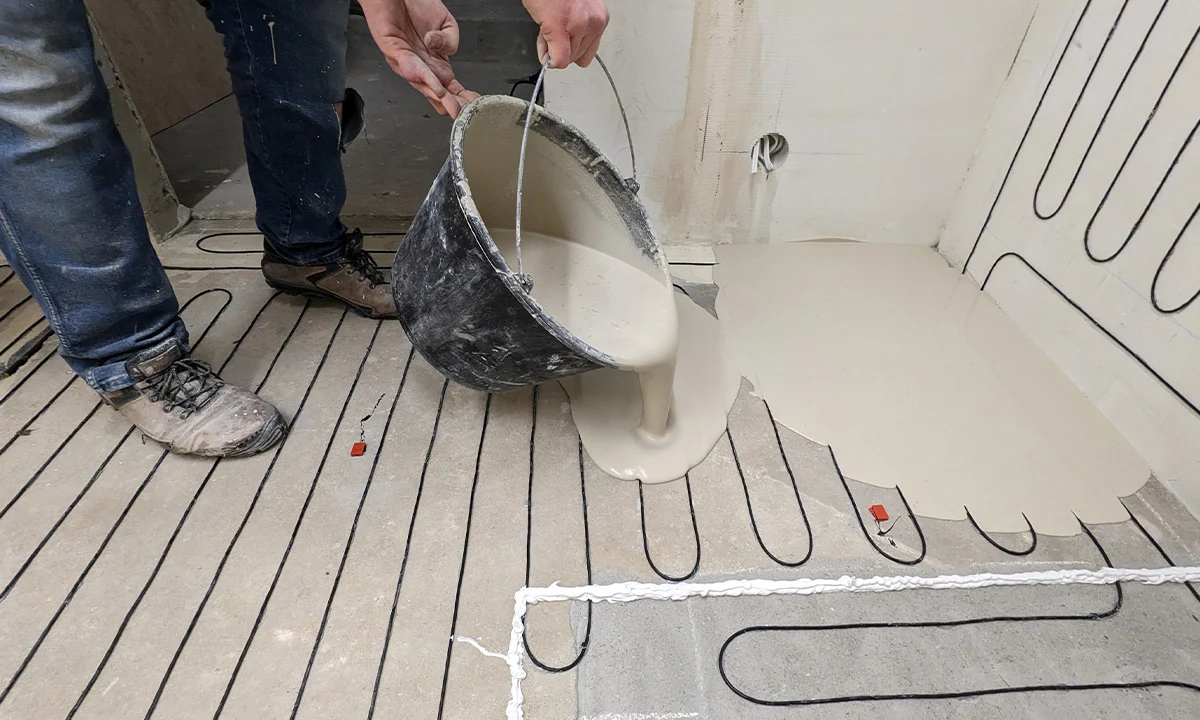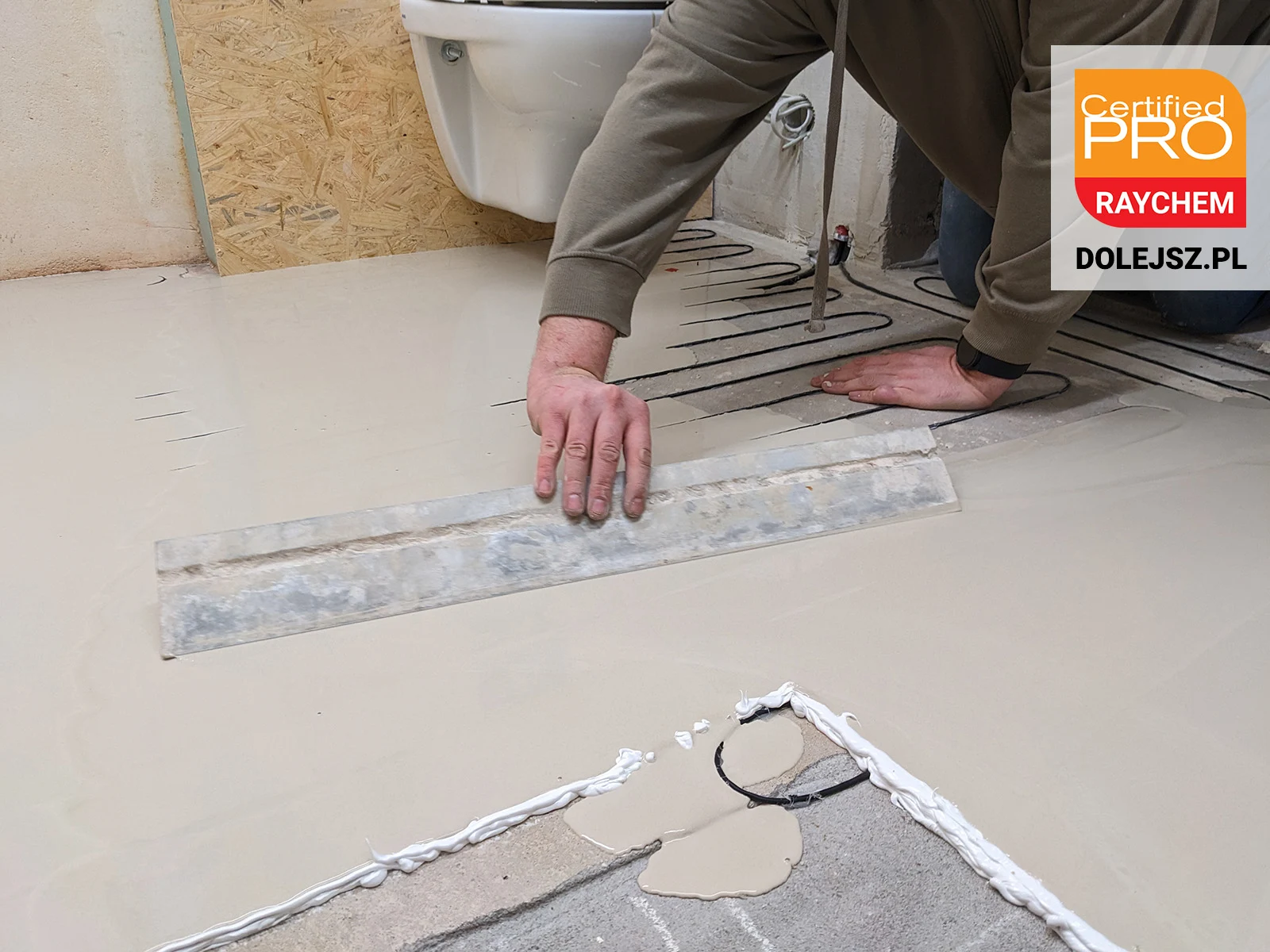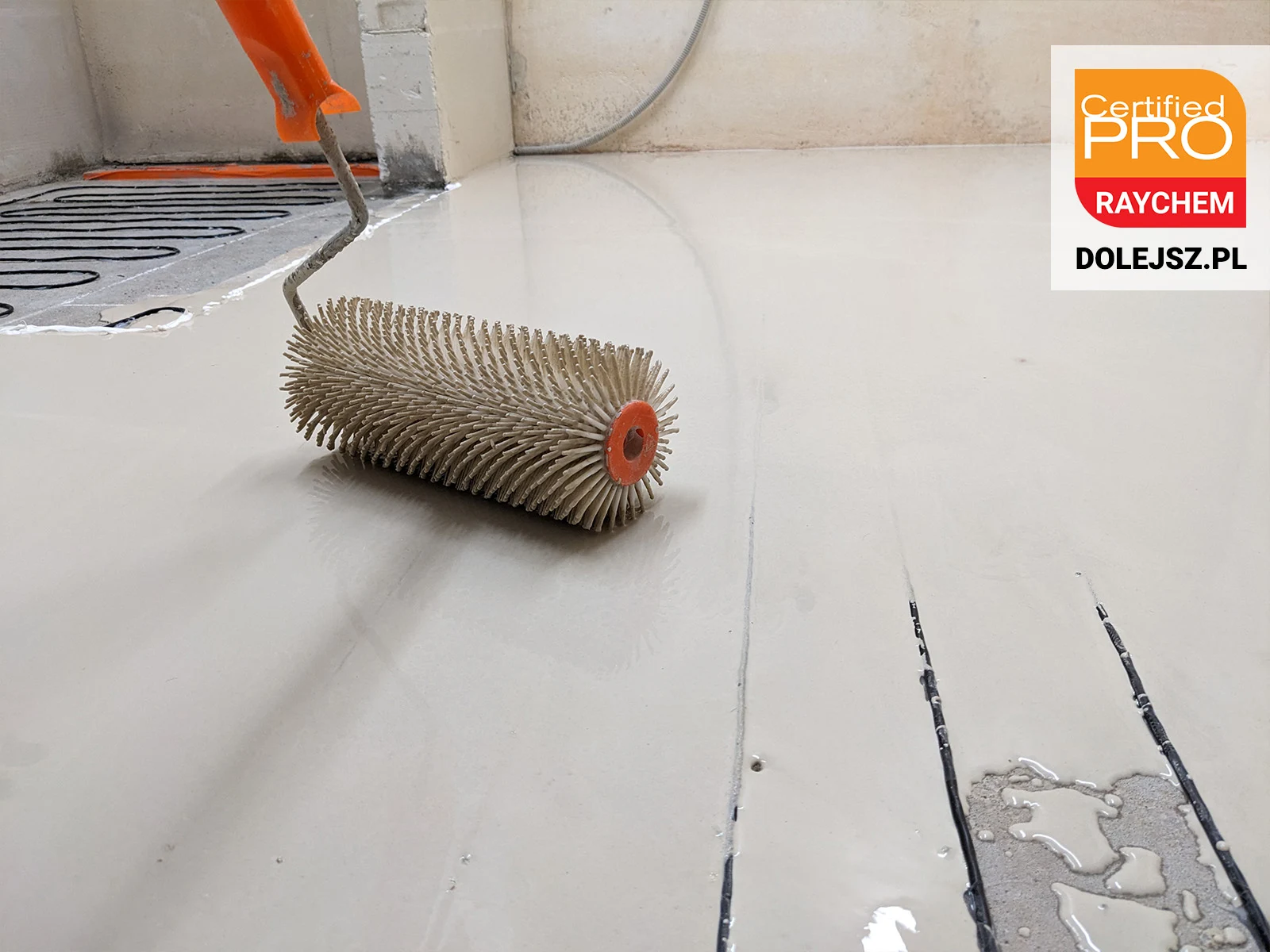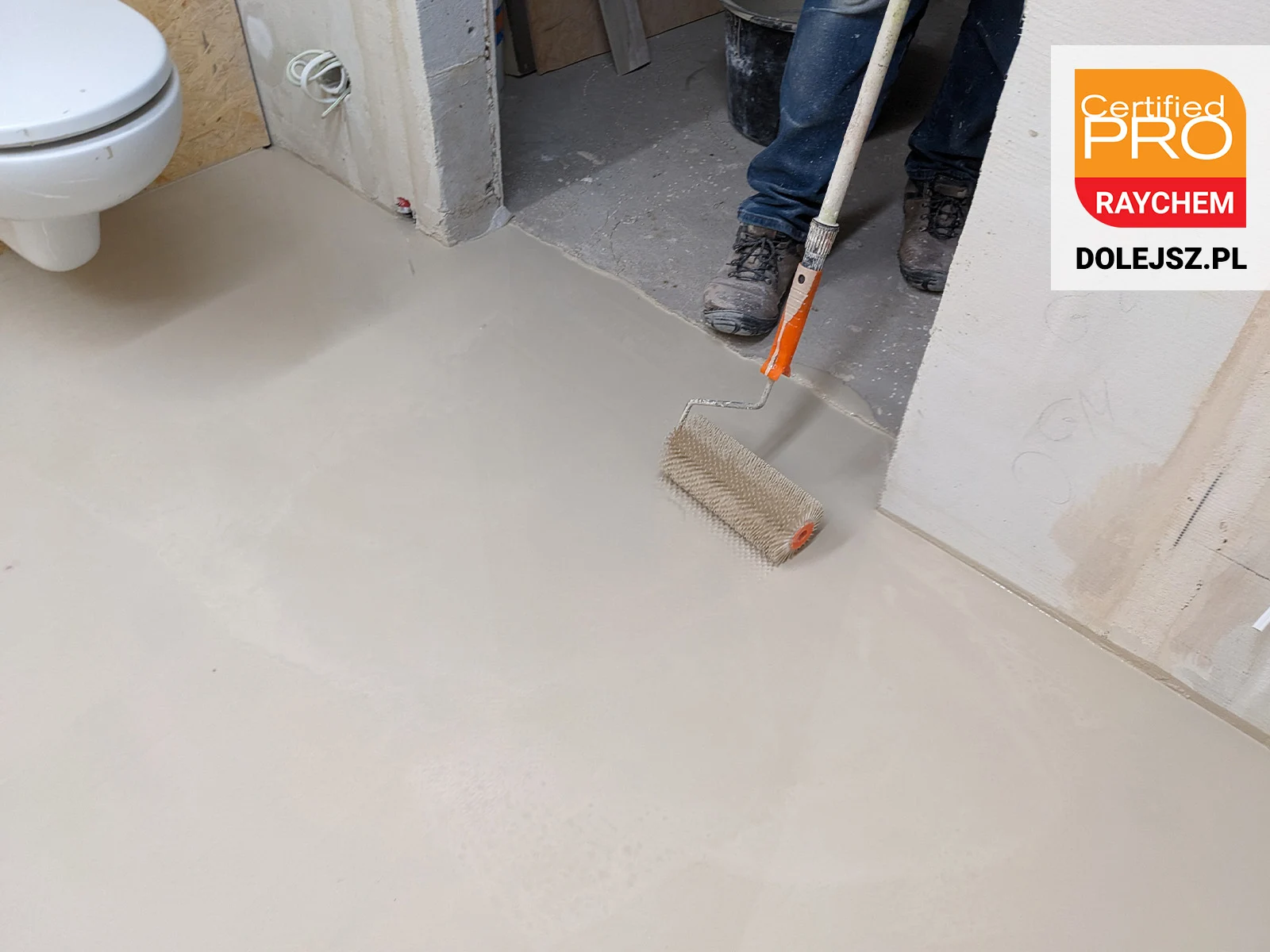How to stick marble slabs and large format tiles on the floor with electric floor heating?

Electric underfloor heating is an increasingly popular solution in modern interiors, especially when combined with large floor tiles, marble or other natural stones. The key to durable and effective performance is proper preparation of the substrate and the use of the right materials. In this article we will discuss step by step how to properly glue marble slabs and large format tiles on a floor equipped with electric heating mats or heating cables.
1. substrate preparation
The substrate must be:
- Dry and clean - Remove any residual paint, dust or grease.
- Stable - Make sure the floor has no cracks and is properly leveled.
- Primed - Apply a deep penetration primer to the substrate. Priming strengthens the substrate, improves adhesive adhesion and reduces surface absorbency, which is especially important with underfloor heating.
- Thermally insulated - In older construction, thermal insulation is recommended to avoid downward heat loss. In new construction, where thermal insulation is usually an integral part of the structure, an additional layer of insulation is not necessary.
2. installation of heating cables or heating mats
Tips:
- Spacing of heating cables: For the RAYCHEM T2Black-12 heating cable, the spacing should be about 80 mm, which will ensure an output of 150 W/m². This spacing guarantees even heat distribution.
- Fastening: T2Black-12 heating cables should be securely fastened to the substrate with the heat-activated adhesive with enhanced adhesion provided with the heating kit.
3. self-leveling screed

The heating cables require pouring a self-leveling screed with a minimum thickness of 5 mm (measured from the top of the cable). This is a key step:
- Why screed?
- Protects wires from mechanical damage during tile installation.
- Provides an even surface for large tiles.
- Improves heat distribution over the entire floor surface.
- Material selection: Use a screed suitable for use with underfloor heating.
After pouring the screed, wait for it to dry completely. The drying time depends on the thickness of the layer and the manufacturer.
4 Choosing an adhesive for large tiles and marble
For the installation of large tiles and natural stone, such as marble, use a high-performance flexible adhesive:
- C2 class flexible adhesive: Dedicated to large formats and floor heating systems.
- White cementitious adhesive: Especially recommended for marble and other light-colored natural stones to avoid discoloration.
5. laying large tiles and marble
When embarking on laying, there are a few key principles to keep in mind:
(a) Preparation of tiles
- Tiles and natural stone should be cleaned of dust and moisture.
- In the case of marble, it is advisable to apply a layer of impregnant.
(b) Application of glue
- Apply the adhesive to both the substrate and the underside of the tile using the "buttering and floating" method. This will ensure full coverage with the adhesive and avoid the formation of voids that can lead to cracks with temperature changes.
(c) Expansion joints
- Maintain adequate spacing between tiles (min. 2 mm) and around walls (about 5-10 mm). These expansion joints compensate for the expansion of materials under the influence of heat.
(d) Laying large formats
- For large tiles (such as 60x60 cm or larger), use a level and spacer crosses to ensure a perfectly even surface.
- Lay the tile gently, then press down evenly to ensure that the adhesive adheres well.
6. grouting
Grouting can be carried out after the adhesive has fully set (usually after 24-48 hours). Choose a flexible grout that is resistant to high temperatures.
7. the first start of the floor heating
After the installation is completed, do not start the heating immediately. The floor requires time for the glue and grout to set completely. The first start of heating should be done gradually, increasing the temperature by a few degrees a day to avoid damaging the floor.
Summary
Sticking marble slabs and large format tiles on a floor with electric underfloor heating requires careful preparation of the substrate, proper application of a self-leveling screed, and the use of appropriate adhesives and materials. Proper execution of these steps will ensure the durability of the floor, the effective operation of the heating and an aesthetic appearance for years to come. If you have doubts about the workmanship, it is worth using the services of specialists.


